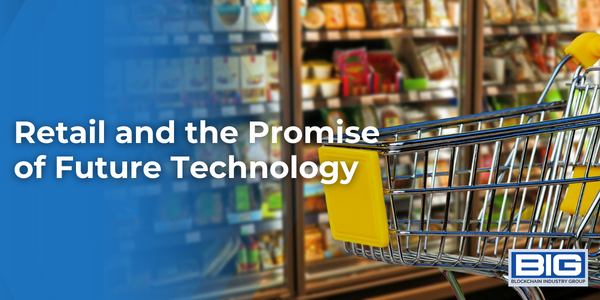
The adoption of future technologies has the potential to drive significant progress and change in the retail industry, enabling retailers to provide more convenient, personalized, and immersive shopping experiences for customers. These technologies could enable retailers to create more efficient and secure supply chain systems, improve the traceability and transparency of their products, and collect and analyze data to identify opportunities for optimization and improvement. As these technologies continue to advance and evolve, they have the potential to drive even more transformative change in the retail industry, creating new opportunities and driving progress towards a better future.
Artificial Intelligence
The adoption of artificial intelligence technology could significantly change the way that retailers interact with their customers, enabling them to provide personalized and targeted recommendations and experiences. Artificial intelligence could enable retailers to analyze customer data and behavior to identify opportunities for personalization and optimization, improving customer satisfaction and loyalty. This could drive significant change in the retail industry by enabling retailers to differentiate themselves from competitors and attract and retain customers.
For example, the use of artificial intelligence could enable retailers to provide personalized recommendations to customers based on their past purchases and browsing history. It could also enable retailers to analyze customer feedback and reviews to identify opportunities for improvement, enhancing the customer experience and driving sales. Additionally, the use of artificial intelligence could enable retailers to optimize their marketing efforts by identifying the most effective channels and tactics for reaching and engaging customers.
Virtual and Augmented Reality
The adoption of virtual and augmented reality technologies could significantly change the way that retailers showcase and sell their products, enabling them to provide immersive and interactive experiences for customers. Virtual and augmented reality could enable retailers to create virtual showrooms or product demonstrations, improving the customer experience and driving sales. This could drive significant change in the retail industry by enabling retailers to differentiate themselves from competitors and attract and retain customers.
For example, the use of virtual and augmented reality could enable retailers to create virtual showrooms or product demonstrations that allow customers to experience products in a realistic and immersive way. It could also enable retailers to provide interactive and personalized experiences that allow customers to customize and try out products in a virtual environment. Additionally, the use of virtual and augmented reality could enable retailers to create interactive and immersive experiences that enhance the customer experience and drive sales.
Robotics
The adoption of robotics technology could significantly change the way that certain tasks are performed in the retail industry, enabling the automation of certain tasks and the improvement of efficiency. Robotics could enable the automation of tasks such as the handling of goods and the processing of orders, improving the efficiency and accuracy of certain processes. This could drive significant change in the retail industry by enabling retailers to reduce costs and improve their competitiveness.
For example, the use of robotics could enable retailers to automate the handling of goods and the processing of orders, improving the efficiency and accuracy of these processes. It could also enable retailers to improve the speed and accuracy of inventory management, reducing the risk of errors and improving the efficiency of operations. Additionally, the use of robotics could enable retailers to reduce labor costs and improve the efficiency of their operations, enhancing their competitiveness and profitability.
Blockchain
The adoption of blockchain technology could significantly change the way that retail transactions are processed, enabling the creation of secure and transparent supply chain systems. Blockchain could enable the creation of immutable and transparent records of transactions and provenance, improving the traceability and transparency of products and enabling the creation of more efficient and secure supply chain systems. This could drive significant change in the retail industry by enabling retailers to improve the quality and trustworthiness of their products and reduce the risk of fraud.
For example, the use of blockchain could enable retailers to create immutable and transparent records of transactions and provenance, improving the traceability and transparency of their products. This could enable retailers to demonstrate the origin and authenticity of their products, enhancing the trustworthiness and quality of their products. It could also enable retailers to create more efficient and secure supply chain systems, reducing the risk of fraud and improving the integrity of their products. Additionally, the use of blockchain could enable retailers to reduce the cost and complexity of certain transactions, improving the efficiency and effectiveness of their operations.
Web3 Applications and the Decentralized Web
—
Web3 Development Tools Empowering the Decentralized Future
—
Women Leading in Science and Future Technologies
Internet of Things
The adoption of Internet of Things (IoT) technology could significantly change the way that retailers interact with their customers and manage their operations, enabling the creation of more connected and data-driven retail environments. IoT could enable retailers to collect and analyze data from connected devices and systems to identify opportunities for optimization and improvement, improving the efficiency and effectiveness of their operations. This could drive significant change in the retail industry by enabling retailers to reduce costs, improve their competitiveness, and provide more personalized and targeted experiences for customers.
For example, the use of IoT could enable retailers to collect and analyze data from connected devices and systems to identify opportunities for optimization and improvement. This could enable retailers to improve the efficiency and effectiveness of their operations by identifying inefficiencies and bottlenecks and implementing solutions to address them. It could also enable retailers to provide more personalized and targeted experiences for customers by collecting and analyzing data on customer behavior and preferences. Additionally, the use of IoT could enable retailers to improve the efficiency and effectiveness of their marketing efforts by collecting and analyzing data on customer behavior and preferences.



